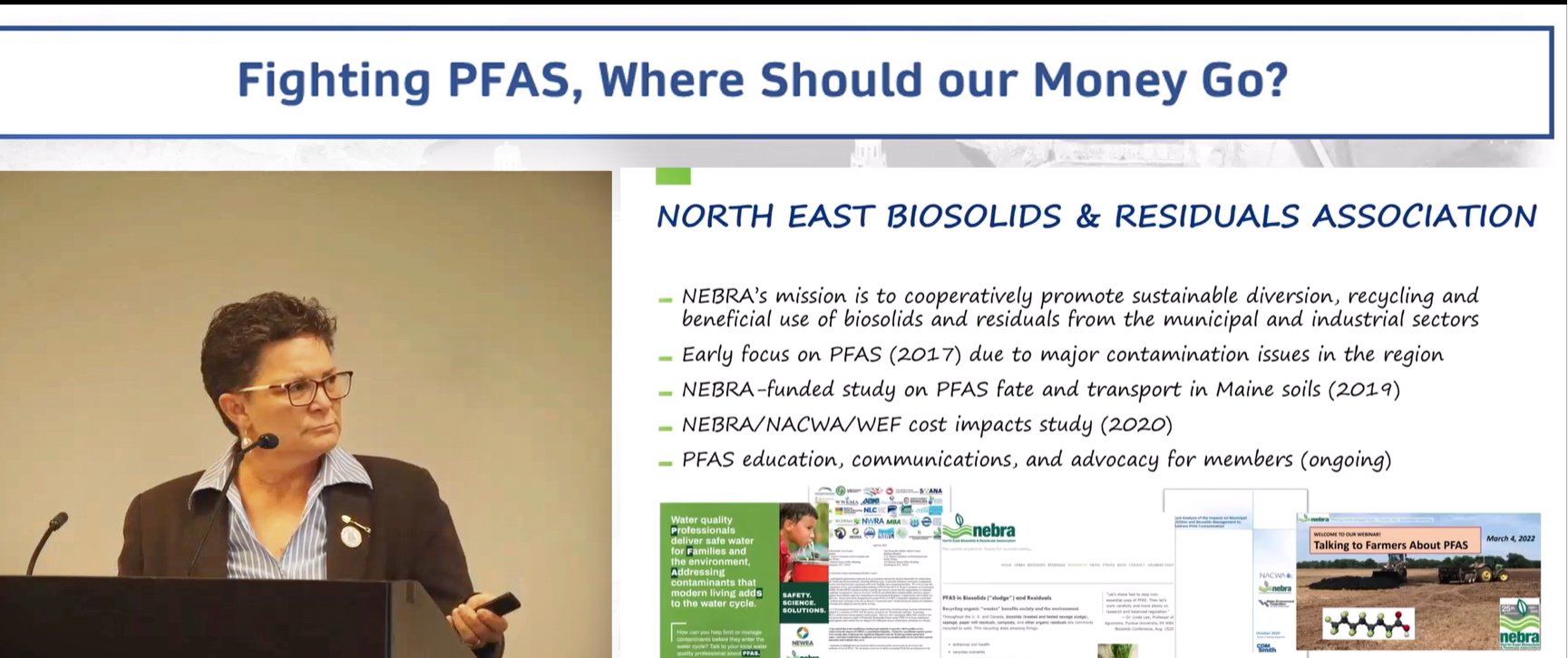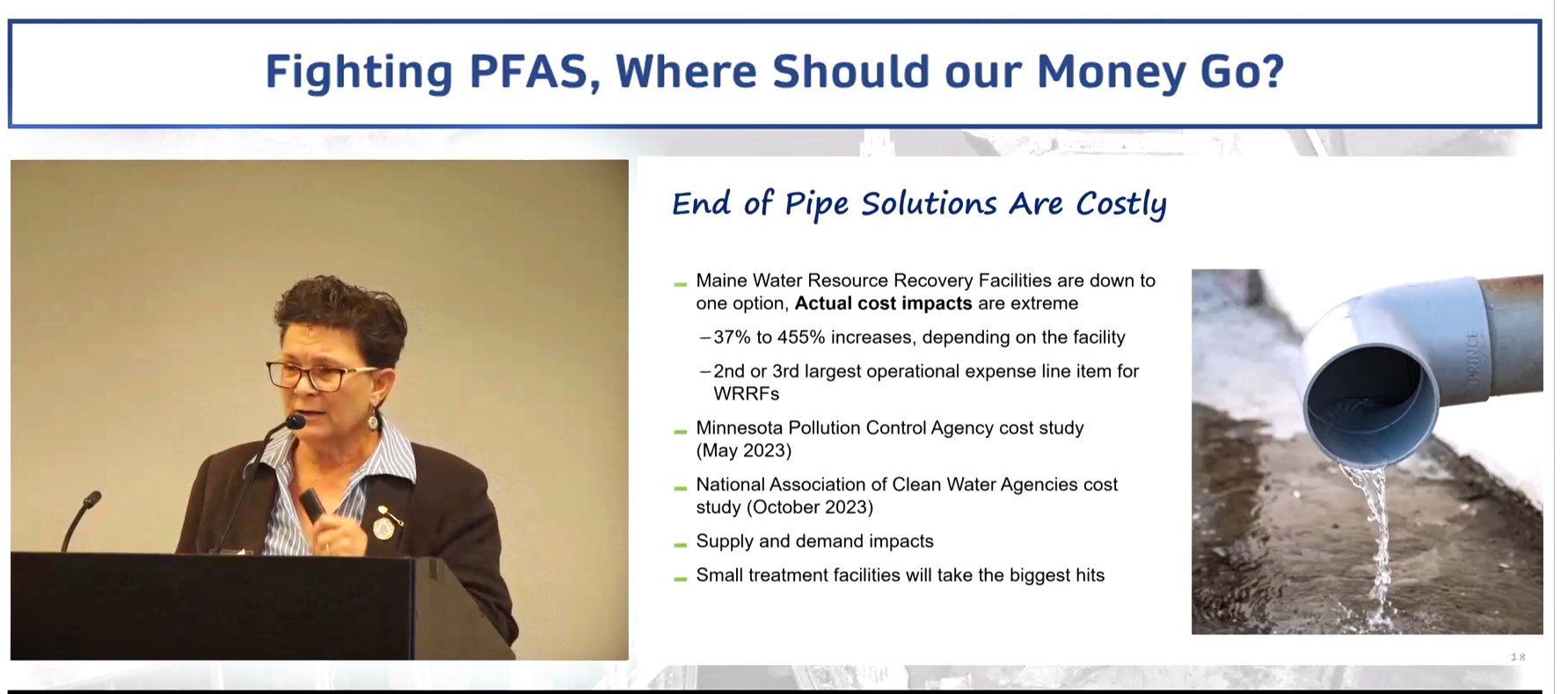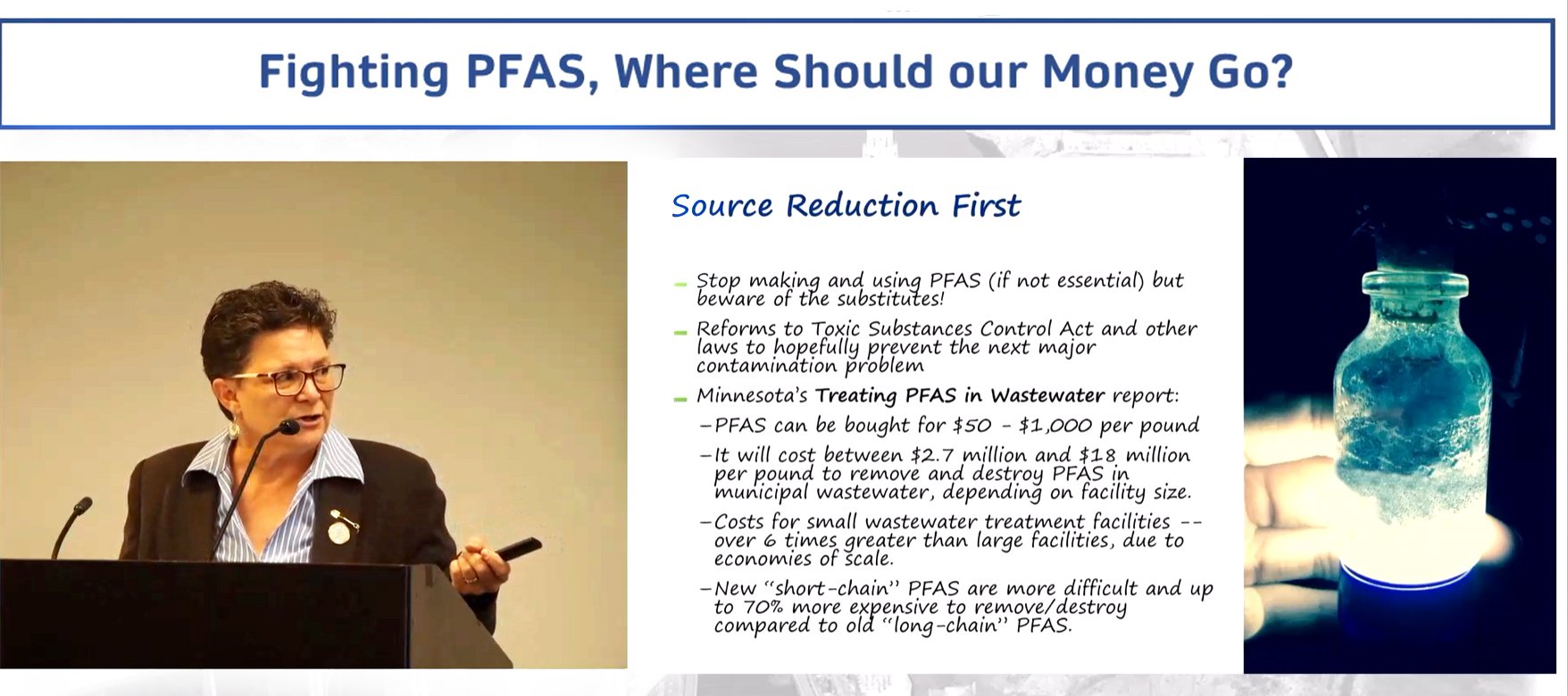The North East Biosolids & Residuals Association’s Executive Director, Janine Burke-Wells, was invited to speak on a panel titled “Fighting PFAS: Where Should Our Money Go?” last month in Chicago as part of the American Society of Civil Engineer’s 2023 Conference. Moderated and coordinated by CDM Smith’s Ralph Ebert, the panel brought together a variety of industry leaders with various perspectives. They included a regulator, a materials manager, and one of the top experts on PFAS chemistry and removal/destruction technologies.
In addition to NEBRA’s Burke-Wells, the panel consisted of Deborah Nagle, Director of the Office of Science & Technology for the U.S. EPA Office of Water, Brian Brazil, Director of Engineering Science & Wastewater Treatment for Waste Management, Dr. Ian Ross, PFAS Practice Leader for CDM Smith.
The purpose of the session was to discuss “where to draw the battlelines and get the most value from the limited resources available to mitigate” PFAS in the environment and “emerging technologies that are available to ultimately separate, concentrate, and destroy PFAS in our environment and how to effectively communicate the risks of PFAS to the public.” The session was Livestreamed and recorded by ASCE for future viewing by its members.
Burke-Wells titled her presentation “The Genie is Out of the Bottle” saying we will spend a lot of money and time to address PFAS in the environment. She stressed that the sources of PFAS, not the receivers, should pay for the remediation costs. She introduced NEBRA and its involvement with PFAS and reviewed the basics on biosolids management, including the big picture benefits of recycling them to the soil for all the civil/infrastructure engineers in the audience.
She summarized numerous cost studies that have been done, showing the huge impact PFAS is having on wastewater operating budgets where there has been contamination or regulation related to PFAS. She discussed the cost and other impacts in Maine where the legislature has limited biosolid end uses to landfill.
As far as how to best spend money to tackle PFAS in the environment, Burke-Wells offered the following thoughts:
Stop putting it out there! Rework laws and regulations to ensure no future PFAS situations. End of pipe solutions are simply not cost-effective.
Address the hot spots. Focus time and effort on the major contamination issues and hot spots due to manufacturing or use of PFAS.
Develop better analytical methods and rapid detection tools to measure PFAS in the environment and help focus efforts on the hot spots, see #2.
Research, research, research! Burke-Wells stressed the need for much, much more research, especially: toxicity and human health impact studies, environmental behavior studies, and risk assessments. Research is also needed into PFAS destruction technologies – what Burke-Wells called “the long way out” — but any and all solutions are needed right now! She also included “risk communications” under research. Part science and part art, risk communications will be critical to ensuring the public has the proper perspective as to the relative risks of PFAS exposure in their daily lives. This will help ensure public support when it comes time to pay for what is needed. Burke-Wells stressed collaboration throughout her presentation but especially when it comes to research! We need all perspectives.
Innovation in Regulation: Burke-Wells acknowledged that regulatory drivers will be necessary to address PFAS in the environment but it needs to be smart regulation. Again, collaboration is needed – the best ideas have to win!! She recommended using adaptive management methods to move forward cost effectively, despite all the remaining unknowns. She stressed the need to look at the lifecycle of PFAS in the environment as regulations are being developed. For example, she pointed out, there are significant differences in greenhouse gas emissions, depending on biosolids management method.
During the question-and-answer session following the formal comments, the panelists discussed what they saw coming with respect to addressing PFAS in the environment. EPA’s Nagle said PFAS monitoring for wastewater was coming. She stressed the importance of industrial pretreatment programs to reduce what’s coming in, and to use approved EPA analytical methods. She also announced an upcoming study involving 400 publicly-owned treatment works across the country, looking at PFAS in influent and biosolids in order to inform regulations.
In response to a question about what emerging technologies are showing promise for wastewater and biosolids, Burke-Wells commented that there was lots of innovation going on in Maine. She mentioned the BioHub for PFAS and biosolids technologies, the Anson-Madison Sewer District’s pilot project using foam fractionation, as well as some pilots for SCWO and pyrolysis/gasification that are in development. She said the Department of Energy was funding a lot of these pilots as destruction technologies can require a lot of energy. Someone from the audience was from Bedford, New Hampshire, and spoke to the legacy left behind by Saint Gobain, asking who is really going to pay for the clean up and the additional expenses? Burke-Wells said the State of Maine was spending a lot of money on PFAS right now. She thought the federal government needed to contribute. And there are lawsuits, of course, but she stressed that we can’t wait for litigation to start taking action. We need to take cost-effective steps now.



